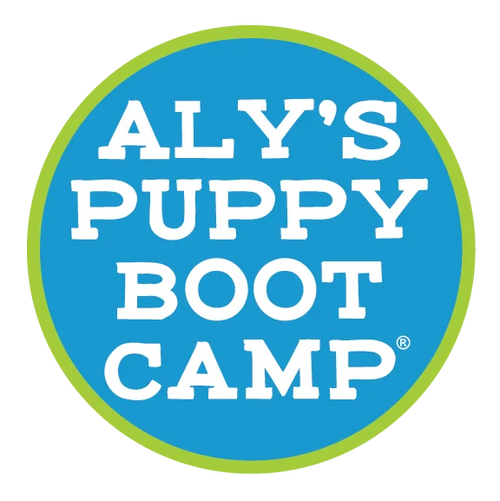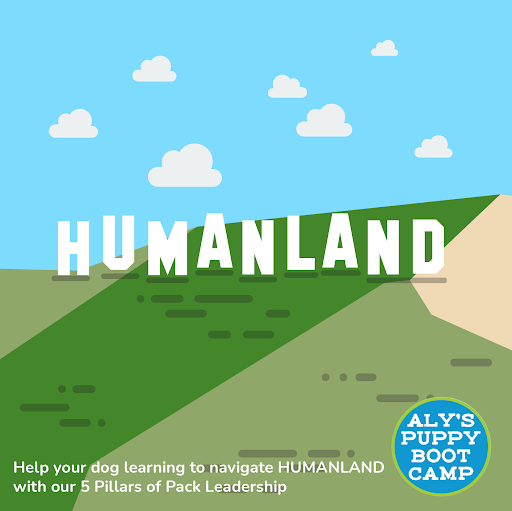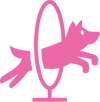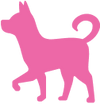Understanding Nervous and Anxious Dog Behavior
Dogs are strangers in a strange land, called HUMANLAND and they are doing their best to navigate it. There are strange smells, strange sights, strange sounds, strange energy, strange everything. Some dogs are simply hyper-aware of this world and it can be unsettling to them. These are the anxious/nervous/shy dogs. Each dog has a unique personality that will affect his view on our world. The good news is that we can help our dogs see their world through a different, less-worrisome prism. But it’s a different path to get there with these dogs. That’s why I’ll be diving deep this month into these kinds of dogs and the things you can do to help them.
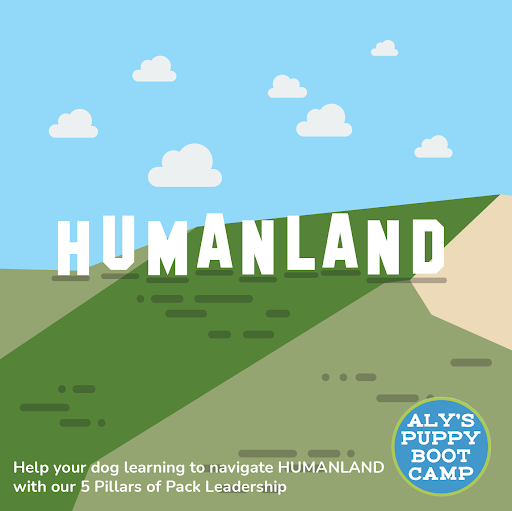
Nervous and Anxious dogs are simply not comfortable in our world.
Either by circumstances that happened to them in a traumatic situation OR by things we are doing unintentionally that contribute to their stress. When all the stressors are at overload, a dog reacts. Reactions can run the gamut like barking at the person or dog walking by. Growling ‘out of nowhere’ at something. They can begin to whine and get agitated when we are out of their view. They can lunge at the leash or try to flee away from something that alarms them. They can be skittish at new sounds. They can be shy at new stimuli. The reactions we see are endless,
When a dog has a ‘moment’ there is a tendency for people to FREAK out with worry, or fear when their dog startles, acts shy or is skittish or vocalizes. And worse, humans tend to anticipate the reaction, which can even manifest these behaviors in the future. Humans making common mistakes in these situations will never work well with a sensitive, anxious or nervous dog.
For me, the actual act of startling, act of being shy or act of skittishness or making a vocal noise is no big deal. The act of a dog noticing, reacting to or acknowledging something that happens in their world, does not have a negative or positive value to me. It merely JUST IS, in that moment. All future moments are not defined by that one moment. For me, what carries much more weight is what happens AFTER the act of startle, shy, or skittishness or vocalization that is the most important piece in this puzzle. Does the dog go into a huge reactive state? Does the dog bark and then want to attack the offending object? Does the dog start hysterically barking and keep at it for extended periods of time? Does the dog go into a state of mind of FLIGHT or FIGHT and freak out flipping around at the end of the leash? Does the dog bolt off?
It is possible to form a relationship with your dog that will help your dog to come back to your side after the startle. You can develop the ability for your dog to be able to still accept your leash guidance even when he has a ‘moment.’ You can learn to help your dog choose to move along with you when he’d rather react. Your dog can learn to stop barking after you acknowledge what was going on. These are mighty things that you can help your dog learn. And, helping your dog learn these things can also help you, the human, to keep perspective AFTER the event and you both can learn how to handle new stimuli in a more calm and confident way.
A LOUD BOOM, a motorcycle roaring by, too hot, too cold, an approaching human reaching out toward the dog–basically, you dream up all the things that can elicit a reaction of startle, skittishness, shyness or vocalness in your dog. No matter the reason WHY your dog is acting skittish, shy, startley or vocal, there are things we need to know and do and my Pillars of Pack Leadership foundation helps to build confident dogs.
STRUCTURE– the MOST important thing for nervous and anxious dogs. When a dog knows the routine, it helps to lower anxiety. It lets them know that they can count on you. Structure also helps you to understand the issue from your dog’s perspective; knowing their natural drives that may be in play (prey, pack, defensive) and the state of mind they are in (fight, flight, avoidance or acceptance) will alter your reactions dramatically. Crating your dog is one way to help define activity times from rest or eat times. We run a system of: work, play, eat, rest, over and over throughout a day. And crating is a part of the rest/eat portion of the day.
RITUALS–Again, nervous and anxious dogs don’t need to be making decisions about mundane things. It layers on too much stress. The world is overwhelming enough to them. You dictate when potty time is, when feeding time is and when sleep time is…they will thank you for it.
RESPECT OF SPACE– a dog’s world is all about spatial awareness and sensitivity to things that may encroach upon their comfort bubble. Nervous and anxious dogs are highly attuned to spatial nuances and do much better when boundaries are clearly defined for them. Also, ask yourself, what is your dog smelling, hearing or seeing that you may not? Being aware of your surroundings when you are out with your sensitive dog will help you be more prepared to help him BEFORE the reaction occurs.
PURPOSE DRIVEN ACTIVITIES– working together in a purposeful way builds confidence, relationship and trust. Nervous and Anxious dogs need confidence, trust and relationship more than any other type of dog. YOU need to become the SAFE SPOT for your dog, and when you work basic obedience, take walks with your dog, work place and play with your dog, you are building a relationship. And, in a healthy relationship there is tons of trust.
THE HUMAN COMPONENT– Humans make very common mistakes with nervous and anxious dogs by NOT knowing how to help them learn to stand on their own four paws. For example, saying, “It’s Ok baby, it’s ok” isn’t the most powerful thing you can and should be doing with your nervous or anxious dog. Building confidence in a dog, requires you to prove to your dog that YOU’VE GOT IT. ALWAYS. NO MATTER WHAT. What you do with your hands, your body, your feet, your tone in that moment–all communicate that truth to them. When you learn how to use your body correctly, you are actually speaking the language dogs speak. Evaluate your response to their response. Humans must remain Calm, Confident, and Clear to your dog as you begin to deal with that type of exposure again. You can actually help your dog modify their perception of this event in the future when you apply YOUR work correctly.
ALL dogs benefit from these pillars working together, but some dogs, in the absence of any one thing. come undone! The Pillars of Pack Leadership foundation is everything that helps you to help your dog learn how to navigate our human world in a more calm and confident way.
You can learn more about the the Pillars of Pack Leadership HERE and if you are ready to learn directly from Aly about how to work with your nervous or anxious dog…sign up to receive updates on our upcoming Pillars of Pack Leadership Academy Workshop-Anxious & Nervous Dog Edition that starts later this month.
